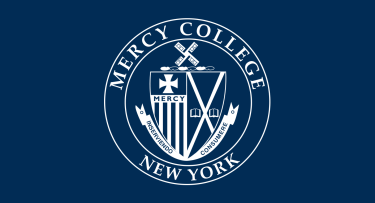School of Health and Natural Sciences Students to Show Appreciation for Anatomical Donors

Much ado is made about the gift of life, and rightly so.
At the same time, however, the gifts provided by the dead and dying can also breathe life into the living and provide a profound educational experience.
On Tuesday, April 23, 2019, at 5:00 p.m., Mercy College will show appreciation for such gifts during its fourth annual Anatomical Donor Appreciation (ADA) Ceremony in the Rotunda, located in Mercy Hall. The program will acknowledge and celebrate those who have donated their bodies to benefit Mercy’s students, who have organized the evening’s program.
Mike Berrios ’16, a graduate of Mercy’s School of Health and Natural Sciences, as well as a rising third-year medical student at SUNY Downstate College of Medicine, will be the keynote speaker. There will also be music and presentations by SHNS faculty and students, and an exhibit of Mercy students’ “Art in the Lab.” A reception, featuring light refreshments, will follow.
Dr. Ferdinand Esser, an Assistant Professor in the School of Health and Natural Sciences, explained that Mercy students have benefitted for decades from anatomical donors. Over 150 students across three programs – Doctor of Physical Therapy, Occupational Therapy, and Physician Assistant Studies – along with any other interested students who take the human anatomy courses study the 34 bodies, on average per year, that have been donated, he said.
“I discussed the recognition of donors with the administration, and we initiated this great opportunity here at Mercy,” remarked Esser, who directs Mercy’s anatomy lab. “When I went through school, there was an overriding statement that we were to appreciate these (bodies) initially. Then, as you work with the bodies, you could really feel that sense of importance in that appreciation.”
Mercy College receives its donors’ gifts through a New York State consortium, and while virtual cadavers are coming on the scene, Esser said there is nothing like the real thing for students learning anatomy.
“The bottom line is that the body is the best source to learn anatomy. When compared to models, computers and illustrations in anatomical texts, dissection is the best way to study the human body,” Esser mentioned. “We do refer to this as their first patient, in a sense. They are to not only learn but always observe the unique qualities of the individual because every body is unique. They take from that, ultimately, an appreciation and a thanks for the donor for giving their body.”
Esser also mentioned that students may find some difficulty dissecting in the early going but quickly become accustomed to it.
One of those students was Berrios, who took anatomy in his first semester and later worked as a teaching assistant and a supervisor in the laboratory. In his keynote, he intends to touch upon his experiences working with donor bodies.
What Berrios plans to relay is: “The importance in respect to the study of the human body and how profound of an experience that is for us students, and also how understanding of the human body and its structure really helps us understand not just the human body but nature in general. When you get an understanding of nature, you also get a better understanding of the universe around you.”
“I spent a lot of time in that lab. I spent a lot of time dissecting cadavers and teaching anatomy,” Berrios noted. “That’s something that’s following me into medical school. It’s something that is definitely going to continue being a big part of my life from here on out. It’s totally changed my life, for sure.”
Though some students may take these bodies for granted, Berrios chooses a different point of view.
“It’s one of those moments where we get to appreciate human life and human existence, and you build a relationship with these cadavers,” he said. “You can’t help but ask yourself, ‘I wonder who this person was when they were alive?’ I made the conscious effort to remind myself that these were living human beings with families, with experiences, and I never forgot that. It’s something that I take quite seriously.
“You start to see what is meant by all of us are created unique. It’s not just in our personalities that we’re unique. It really is in the structure of our bodies.”
If you are interested in attending the ceremony, please RSVP here.
To view a video of a previous ADA Ceremony at Mercy College, click here.
